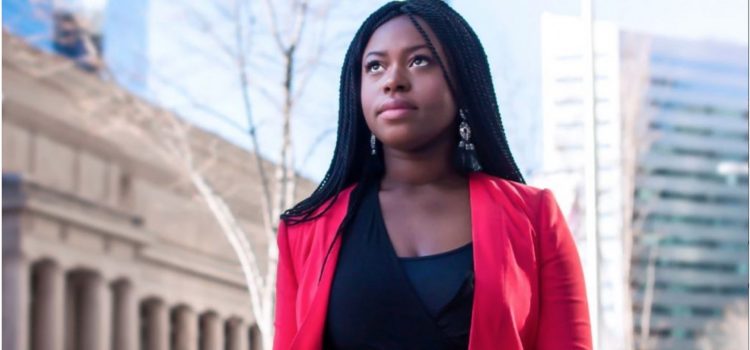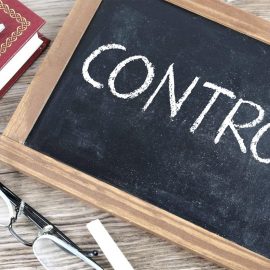

This article is an excerpt from the Shortform book guide to "Untamed" by Glennon Doyle. Shortform has the world's best summaries and analyses of books you should be reading.
Like this article? Sign up for a free trial here .
What are the best habits to change your life today? How can you embrace new habits permanently?
In Untamed, speaker, author, and activist Glennon Doyle shares how she was unable to express her emotions or cope with the heartache, pain, anxiety, and depression she experienced as a young woman. Eventually, Doyle discovered new habits that freed her from the strictures of society by rejecting the limitations society imposes on women.
Read on to find out two of the most important habits for living a happier life, according to Doyle’s advice for women.
Habit 1: Embrace Your Emotions
By avoiding pain, Doyle had stopped progressing and had limited her potential. She became stronger when she faced these painful emotions and didn’t look away. If you want to change your life, a habit Doyle suggests is using painful emotions to grow and evolve—to become truly alive. Doyle defines being “alive” as constantly evolving into a more authentic and fully-formed version of yourself. She believes your emotions will provide all the instructions you need to guide you on your journey—and the most challenging emotions are often the most instructive.
(Shortform note: Doyle’s post-rehab growth is a common experience—many people experience positive psychological change, which experts call Post-Traumatic Growth, after a hardship or trauma. This phenomenon occurs because enduring a life-altering event can suddenly force you to consider your relationships, who you are, and your place in the world.)
Doyle names three instructive difficult emotions :
- Anger can reveal your core beliefs. When you get angry, it is a sign that someone has challenged your deeply held beliefs about yourself or the world.
- Heartbreak can guide you toward purpose and activism. The issues that break your heart are the causes you should become more involved in. (We will explore this further in the next section.)
- Grief requires you to let go of a previous way of life you can’t return to. Grief becomes an opportunity for rebirth.
| Habits That Change Your Life: Using Positive Emotions Doyle says a habit that changes your life is learning to embrace negative emotions, but in Positivity, author Barbara Fredrickson argues that good emotions do a much better job at broadening your mind and teaching you important truths. Fredrickson says that positive emotions don’t just make you feel good. They can widen your sense of possibility, change your perspectives, and lead to new thoughts and actions. She explains that even small experiences with positive emotions can prompt these effects by increasing dopamine levels in your brain. This increase leads to creativity and openness to new experiences. On the other hand, negative emotions lower your dopamine levels. While negative emotions might be useful for assessing your purpose, letting go of your old habits, and identifying core beliefs, Fredrickson says that they limit the ways you can engage in new thoughts and actions. Fredrickson suggests that you learn to engage more actively with positive emotions by adhering to the 3-1 ratio: For every one negative emotion you feel, engage with three positive emotions. This ratio will allow you to focus more intentionally on dopamine-boosting positive emotions and what they have to teach you. |
Habit 2: Use Your Intuition
According to Doyle, a habit that changes your life is learning to trust your intuition. This empowered Doyle to make decisions that aligned with her inner self. She no longer felt she had to consult others for advice or validation. Her intuition freed her from being controlled by society’s expectations and empowered her to make her own choices.
When making a difficult decision, you can use Doyle’s method for tapping into your intuition:
- Retreat to a quiet place where all you hear is your breath.
- Sink into your consciousness and become aware of a deeper sense of yourself.
- Connect and commune with this version of yourself.
- Ask a question in this mental space and see if you sense a gentle push towards the next step to take.
- Sit and reflect on this new knowledge and insight.
This practice will get you in touch with your intuition, allowing you to make your own choices, confident that your decisions come from a place of strength and inner knowledge. (Shortform note: According to Doyle, self-reflection relies on individual empowerment, but this may not be best for everyone. When learning to use intuition as a habit to change your life, you may want to feel supported by a community as you seek truth and pursue wisdom. There are many ways you can find this community support—for example, you can get involved with a faith community, join a meditation group, or talk with a therapist or spiritual counselor.)
| Practical Steps for Successfully Accessing Your Intuition It’s important to note that there are a variety of practices that can be useful in accessing your intuition—if Doyle’s process of connecting to a deeper sense of self feels a bit too ambiguous for you to replicate, you might try incorporating more concrete steps into your practice. In The Success Principles, Jack Canfield shares his approach to accessing intuition—an approach that is similar to Doyle’s practice in some ways, but includes some more relatable practices. Canfield’s first recommendation is that you prepare your mind and body for meditation by sitting comfortably and practicing relaxation techniques such as deep breathing. Canfield then recommends that you find a focal point (such as a lighted candle) and repeat a single word or phrase, such as “relax” or “I am love.” Repetition can clear your mind and help you focus. Beyond asking you to sit in a quiet, dark space, Doyle doesn’t emphasize meditation preparation practices as much as Canfield does. However, you might find that combining her suggestions with Canfield’s practical advice more effectively gets you into the deep, reflective headspace required for “sinking into” your inner self as Doyle does. Canfield’s next step is to shift into a mode in which you are more receptive to messages and intuition. For Doyle, this receptive mode is a headspace in which she receives messages as a gentle nudge from her inner voice. You may initially find it difficult to get in touch with this nebulous “inner voice”—fortunately, Canfield points out, there are many ways that you can receive messages from your intuition. He suggests focusing on something more tangible: the emotions and physical sensations you feel as you meditate. You can think of these sensations as surface-level messages from your intuition. For example, you pose a question during a meditation session and feel anxiety and tension throughout your body. Your intuition could be telling you that that decision is not the way to go. Canfield’s practice includes a final step that Doyle doesn’t explore: Make an effort to come out of a state of meditation slowly. This gives you time to visualize how you might apply the wisdom you have gained. On the other hand, Doyle’s approach is more oriented towards an immediate return to your everyday activities, confident in your newfound wisdom. |
Exercise: Imagine Your Future
Doyle recommends expressing your wildest dreams for your life and the world so that you can act on them. This exercise will help you identify and articulate these dreams for yourself.
- Write down your five wildest dreams for your future.
- Write down your five wildest dreams for the world.
- What is something you can do today that will set you on a path to making these dreams a reality?

———End of Preview———
Like what you just read? Read the rest of the world's best book summary and analysis of Glennon Doyle's "Untamed" at Shortform .
Here's what you'll find in our full Untamed summary :
- Glennon Doyle's story of freeing herself from society's rules and expectations
- Why you should rebuild your life using emotion, intuition, and imagination
- A look at how young women are taught to repress their emotions and desires






